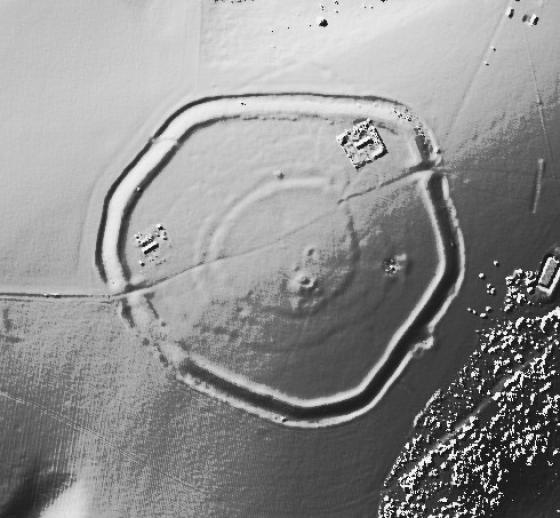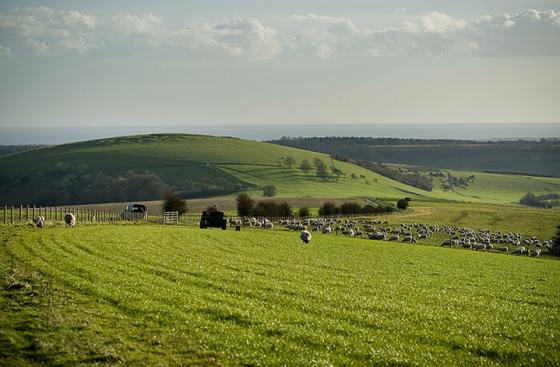
Stephanorhinus? Extinct rhinoceros bone which shows scrape and transverse cutting marks made during defleshing.

Stephanorhinus? Extinct rhinoceros bone which shows scrape and transverse cutting marks made during defleshing.

The native European Mink.

A large bone (Rhino?) split and scraped for its marrow.

Roe deer were present at this time.

One of the large herbivores found in abundance in this area at the time.

A hammerstone with abrasion marks on the left. Now hemispherical but originally spherical. Were the depressions on the right fingerholds?

Boxgrove Man’s tibia (replica) on left with a modern (plague victim!) man’s tibia for comparison.

Comparative sizes of 4 of the c450 cutting tools found on site. It has been surmised that the middle top one is a practice one by a child.(Electronic lighter for scale. Other types still use Palaeolithic technology to create a spark!)

The rather unprepossing site. In the Paeleolithic a cliff would have risen diagonally across the picture with a small lake very roughly where the shed is. The round white patches are the previous excavations.
‘Visited’ 29.5.11
Whilst passing through the area on the way home from a family do it seemed only appropriate that I should have a quick look at such an important prehistoric site. Nothing to see now excepft open grassy fields but time to stop and ponder a little...........
Boxgrove is almost certainly the oldest site to be added to TMA.
About 480,000 years ago, groups of homonids were here slaughtering and butchering some of the large game which came to a small lake fed by springs at the foot of a cliff. The fresh water lured prey and hunter alike.
The climate of southern Britain at this time was similar to the present but the topography was vastly different. A very wide land bridge existed between the proto-North Sea and the proto-western English Channel. Most of the present flora and fauna was present but many large herbivores/carnivores crossed the bridge and included rhino, bears, huge extinct lions, hyenas and wolves. The countryside was more open than thought a few years ago and appeared more like a cool savannah due to the heavy grazing.
Boxgrove Man, of whom a tibia and two teeth have been found, was a sturdy, athletic and tall (6ft) individual. He was not a modern human but of a species called Homo heidelbergensis, who were descendants of Homo ergaster who had left Africa about a million years previously.
Prey animals seem to have been killed with wooden spears and butchered on the spot and eaten raw, no evidence for fires has been found. Large bones were split for their marrow.
The cutting tools seem to have been made quickly on the spot and then discarded. Too heavy to carry by nomadic hunter gatherers?
Various groups must have returned again and again as about 450 hand axes/knives have been found.
Boxgrove Man might have come to a sticky end as his tibia was found to have been chewed at each end by (possibly) a wolf. Whether he was predated or scavenged after death, who can tell?
It all came to an end with the onset of the Anglian Glaciation when severe tundra conditions prevailed. Meltwater outwash created new valleys and also covered and preserved this site.
As with most excavated sites there is almost nothing to see above ground.
Thanks are due to WARG, the local Winchester society for archaeology and history, for finding me a slot in the very limited numbers allowed to be present.
Very especial thanks go to Mark Roberts who, as the project director for the UCL excavations here and elsewhere, was an astounding guide to the geology/history of this remote period. He also provided the genuine finds from the site (apart from the tibia) for us to handle and marvel at.
The pictures have a few more detailed notes
The English Heritage/UCL website is here for more info on the excavations...... matt.pope.users.btopenworld.com/boxgrove/boxhome.htm
Access
No public admittance. Old quarry is being infilled and regraded. Private land.




































